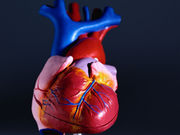Findings for patients with heart failure with preserved left ventricular ejection fraction
WEDNESDAY, Nov. 16, 2016 (HealthDay News) — Sustained clinical benefit has been observed in patients with heart failure with preserved left ventricular ejection fraction treated with an interatrial septal shunt device that allows shunting to reduce the left atrial pressure, according to a study published online Nov. 16 in Circulation: Heart Failure. The research was published to coincide with the annual meeting of the American Heart Association, held from Nov. 12 to 16 in New Orleans.
David Kaye, M.D., Ph.D., senior cardiologist at Alfred Hospital in Melbourne, Australia, and colleagues studied the device in 64 patients with left ventricular ejection fraction of 40 percent or higher, New York Heart Association class II to IV, and elevated pulmonary capillary wedge pressure (15 mm Hg or higher at rest or 25 mm Hg or higher during supine bicycle exercise).
The researchers found that survival at one year was 95 percent. The team noted sustained improvements in New York Heart Association class, quality of life, and six-minute walk distance. A small, stable reduction in left ventricular end-diastolic volume index, with a concomitant small stable increase in the right ventricular end-diastolic volume index was seen via echocardiography. A subset of patients also underwent invasive hemodynamic studies where a sustained reduction in the workload-corrected exercise pulmonary capillary wedge pressure was observed.
“These results provide evidence of safety and sustained clinical benefit in heart failure with preserved ejection fraction patients one year after interatrial septal shunt device implantation,” the authors conclude. “Randomized, blinded studies are underway to confirm these observations.”
The study was funded by Corvia Medical, which manufactures the interatrial shunt device.
Copyright © 2016 HealthDay. All rights reserved.








